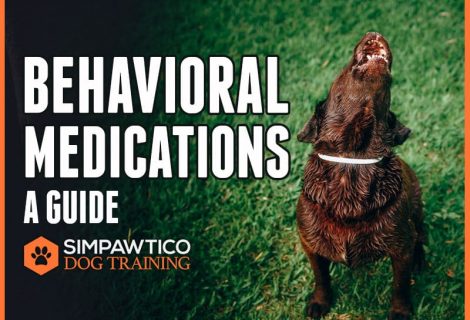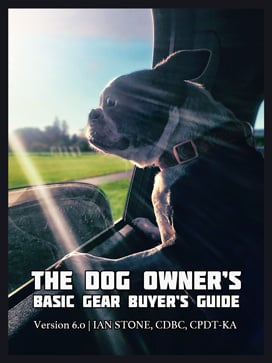This post contains affiliate links. These won’t cost you anything, but the commissions we may earn through them help offset the cost of dog treats. Thanks for your support!
Holiday travel is hectic enough without having to manage your pets. Today we’re going to look at some important considerations and strategies to help make travel with your pets as easy as possible.
Now this is part three of our travel trio series. Whether for the holidays, vacations, or business, you’re going to have make decisions about your pets. Before, we looked at leaving your pet at a boarding facility or with a pet sitter.
In this one, part three, we’ll be looking at some important points for taking your dog with you. So let’s dive in.
PRE-PLANNING
First and foremost, know the vets where you’re going. Do some research. Ask people you know in the destination for recommendations. Look up potential places on Google Local searches for the area, and look them up on theBetter Business Bureau.
If you’re a frequent visitor to an area, have a vet in that location. You’ll have your regular vet at home, and an emergency vet where you travel a lot. Call up the emergency vet where you’ll be going. Get in their system now before you need them so if bad stuff goes down, the process won’t get hung up on stupid paperwork.
This point becomes especially critical if you travel with other pets besides your dogs or cats. Make sure the vet you choose can handle your small pets, birds, and exotics.
Bring along a Master Travel Document. This is a piece of paper with your contact info, your travel plans, vet info, pet info, and special needs in case you get into an accident or are otherwise incapacitated. If you cannot speak for your pets, this document will help professionals care for them appropriately. If you ARE incapacitated, your pets will most likely be taken to a shelter for the time being, not a vet, so give the shelter staff the information they need to take good care of your babies.
In this vein, remember that whomever is caring for your pets in an emergency may not be experienced or equipped to deal with exotics. If you’re bringing other pets with you, carry an Exotic Pet Formulary. This book will help them prescribe medicines and treatments. Make a note of it on your Master Travel Document.
It’s a good idea also to list the contact info of someone who can make decisions about your pets on your behalf.
Other than that, some travel basics apply….
TRAVEL BASICS
Take towels, and a car-seat cover. You’ll need to clean up pets before they get in the car and protect your upholstery.
Bring cleaning supplies for carsickness, such as paper towels and a disinfectant.
Have an animal First Aid kit. Consider your dogs, cats, and any small pets or exotics you may have brought with you. What works for your dog may not work for your guinea pig.
Carry Benadryl for when dogs and cats get worked up or antsy during long trips.
If you’re traveling with gifts during the holidays, don’t make them accessible to the pets. Consider shipping packages. On many occasions gifts have arrived pretty worse for the wear.
Treats are not a good idea while you travel. Not only can they upset sensitive tummies, but many dogs get nervous on car rides and may even bury the treat in your upholstery.
Consider specialized vaccines for where you travel. Are you going somewhere with a high concentration of Ticks? Get a Lyme vaccine. Consult your vet and/or the vet where you’re going for recommendations.
Some kind of car restraint is also strongly recommended. Not only does it protect them in a crash, but in some places it’s the law. For example, in New Jersey it’s illegal for dogs to be in the front seat. Good car restraints will keep them from moving about the vehicle unsafely. It’s a good idea to familiarize yourself with the laws of both your destination, and the places you’ll be traveling through.
And that brings us to the last thing I want to talk about is: you need to be aware of Breed Specific Legislation (BSL).
BE AWARE OF B.S.L
Depending on the kind of dog you have and where you’re traveling, this could be a sticky issue.
Now all of us dog lovers know that BSL is high density, radioactive BULLSHIT, but that doesn’t change the fact that you will be subject to those ordinances if you travel.
Be aware of BSL, and understand that it can change from county to county. Just seeing “Pet Friendly” on the map isn’t good enough. There will be some places you may not even be allowed to stop.
Check destination regulations, AND the regulations of all the places you’ll be traveling through.
Maryland, for example, is the first state in the US to enact Breed Specific laws. I have a close friend–a fellow pet professional–who owns two of the nicest Pitbulls you’ve ever met, and a state trooper basically approached her at a rest-stop and said, “Hit the road, lady.”
If you have a breed that some areas prohibit or discourage, make sure that you have a piece of paper that says what your dogs answer to, that they are friendly, and that they respond to basic commands (they do respond to basic commands, right?).
This paper could be part of your Master Travel Document.
Also list any certifications your dog may have. For example this is Penelope.
She’s been one of my students for years. She is super friendly. She’s a Canine Good Citizen, she’s also a Community Good Citizen. She responds to all basic commands and walks politely on a leash. So your document may say:
“My dog’s name is Penelope. She’s friendly and responds to basic commands. She is an AKC-certified Canine Good Citizen (CGC), and a Community Good Citizen (CGCA).”
Include copies of these certificates as some people may not be immediately familiar with them.
Documenting your pet’s certifications could go a long way towards improving a sticky situation. You’ll probably be asked to leave, but in states where law enforcement is authorized to euthanize animals on the scene, best to avoid as much trouble as possible.
And, as we’ve stressed in the previous two videos: make sure your pets are identified, and up to date on vaccines. These two items are not optional!
SAFE TRAVELS!
Whether you leave your pets with a sitter, at a facility, or you take them with you, make sure you’re smart and prepared about things. This is for both you, and your fur babies.
Question for you: what are your favorite tips for travel or for boarding your pets? I’m sure you’ve all got little tips, tricks and hacks that we didn’t think of so let’s pool our collective knowledge in the comments.
As always, keep learning, keep practicing, and we’ll see you next time. Safe travels to you, and thanks for reading!
RESOURCES
PET FIRST AID
Free Pet Safety Kit from the ASPCA
Pet First Aid & CPR Training from Pet Tech
Pet First Aid Kits:
Do it Yourself Pet First Aid Kit Checklists:
DIY Pet First Aid Kit List from HSUS
DIY First Aid Kit List at PetFinder
OTHER RESOURCES
Purchase the Exotic Pet Formulary on Amazon
Look up Breed Specific Laws, State by State
What can we do to end BSL? Start here at StopBSL
Learn more about AKC Certifications:










